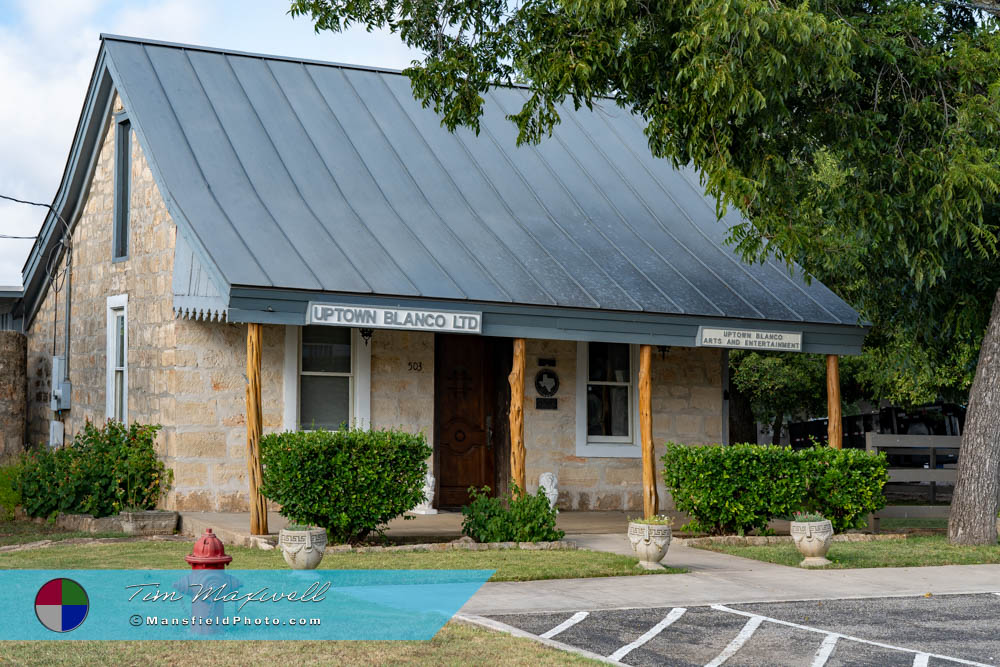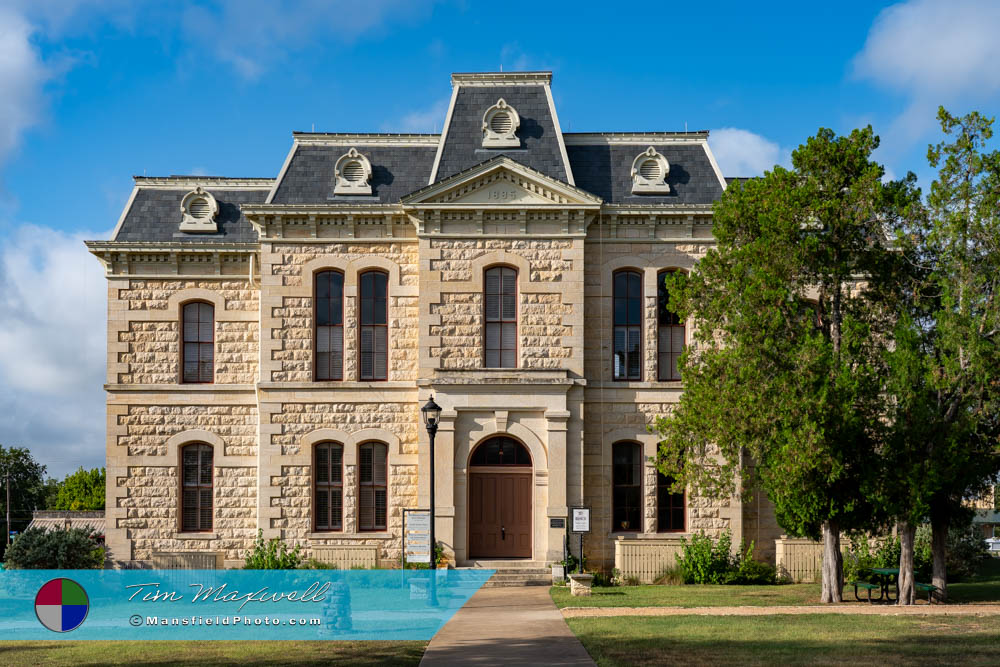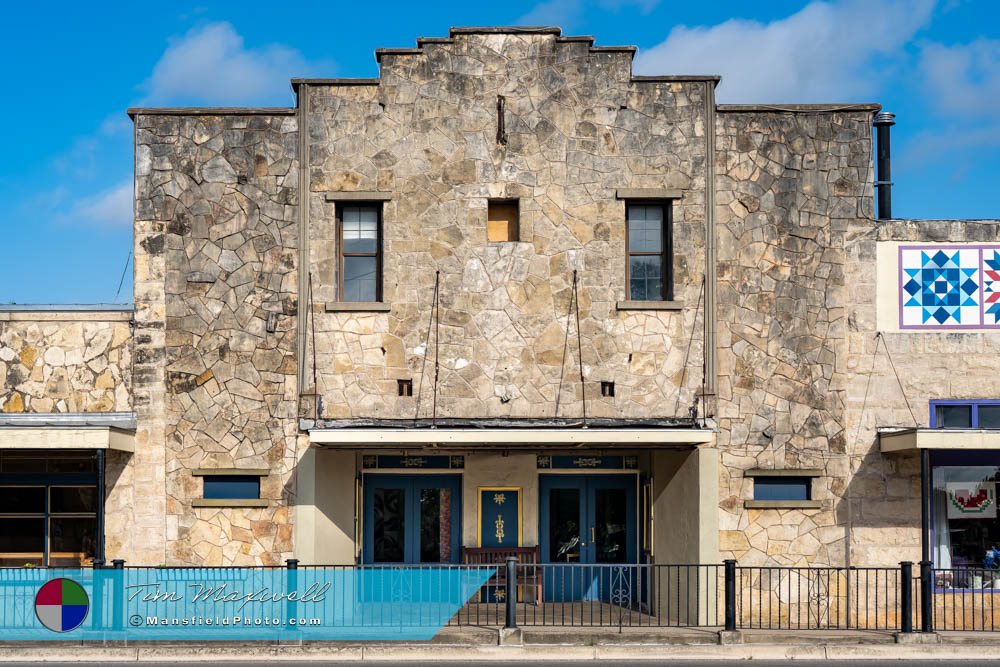Mansfield Photography
Blanco, Texas
– A Courthouse, a River, and a Story of Change.
Blanco, Texas, is a Hill Country town with a history as unique as the landscape around it. Its story is marked by ambition, unexpected turns, and the kind of resilience that small Texas towns often embody. From being the first county seat of Blanco County to becoming home to a beloved state park, the town has seen both triumphs and challenges that continue to shape its identity today.
Founding and Naming
The community was founded in 1853 along the banks of the Blanco River, from which it took its name. “Blanco” means “white” in Spanish, a reference to the limestone rocks and the river’s light-colored appearance. Like many early Texas settlements, its location was chosen for water access, fertile land, and the opportunities it presented for growth in a developing frontier.
By 1858, Blanco County was officially formed, and the town was designated as the county seat. This status placed it at the center of political and social life in the region, attracting settlers, entrepreneurs, and professionals who sought to build a future in the expanding Hill Country.
The Courthouse that Lost Its County
One of the most fascinating chapters in the town’s history revolves around the 1886 courthouse. Designed by renowned architect F. E. Ruffini, the Victorian-style stone building was erected as the first permanent county courthouse. Its elegant design reflected the confidence and aspirations of the community.
But that confidence would soon face a blow. In 1890, after just four years of service, the county seat was controversially moved to Johnson City following a contested vote. The courthouse, a symbol of progress and permanence, suddenly lost its intended role. What makes this especially unusual is that few, if any, other towns in Texas experienced such a dramatic shift after investing in a grand courthouse.
A Building with Many Lives
Though its tenure as a courthouse was short, the building refused to fade into obscurity. Over the decades, it found new purposes that mirrored the changing needs of the community. It served as a school, then housed the Blanco National Bank, and later became the office of the local newspaper. At one time, it even operated as an opera house and a Farmers’ Union Hall.
Perhaps its longest and most memorable service came between 1936 and 1970, when it was converted into a hospital. Today, the structure stands preserved as the Blanco Museum of the Early West, a place where history lives on through exhibits and storytelling. Visitors who walk through its doors can appreciate both the building’s beauty and the layered history it represents.
Blanco State Park
Not far from downtown, another landmark tells the story of community vision and lasting craftsmanship. In 1933, the Texas Legislature established Blanco State Park, securing more than 100 acres along the river. Local property owners contributed by donating or selling their land, paving the way for a public recreational haven.
From June 1933 to May 1934, the Civilian Conservation Corps (CCC) carried out the initial improvements. Their stonework, evident in dams, bridges, pavilions, picnic tables, and benches, remains one of the park’s most defining features. The CCC’s enduring legacy can still be experienced today by visitors enjoying the river for fishing, swimming, or simply appreciating the natural setting.
The park also became a hub for community gatherings, with areas leased for rodeos, fairs, and sporting events. As one of the earliest Texas parks improved by the CCC, it holds an important place in both state and local history.
Present Day
Today, Blanco has become known as both a historic destination and a gateway to Hill Country recreation. Its downtown retains the charm of the past, with shops, eateries, and restored buildings that recall its 19th-century origins. The old courthouse turned museum stands as a monument to resilience, while Blanco State Park continues to attract visitors who want to experience the river and enjoy a peaceful retreat.
The town also draws attention for its annual Lavender Festival, which celebrates the area’s agricultural heritage and brings in visitors from across the state. Combined with its proximity to Austin, San Antonio, and Fredericksburg, Blanco serves as a convenient stop for travelers exploring the region.
A Town of Surprising History
The story of Blanco is not just about its courthouse or its river. It is about a community that adapted when circumstances changed, making the most of what could have been setbacks. Few towns can say they built a grand courthouse only to lose the county seat within four years, and fewer still could repurpose that same building so many times over.
From the limestone banks of the Blanco River to the Victorian courthouse that found new life, the town tells a story of endurance, reinvention, and a sense of place that continues to attract residents and visitors alike.
📸 Interested in More Photos of This Town?






